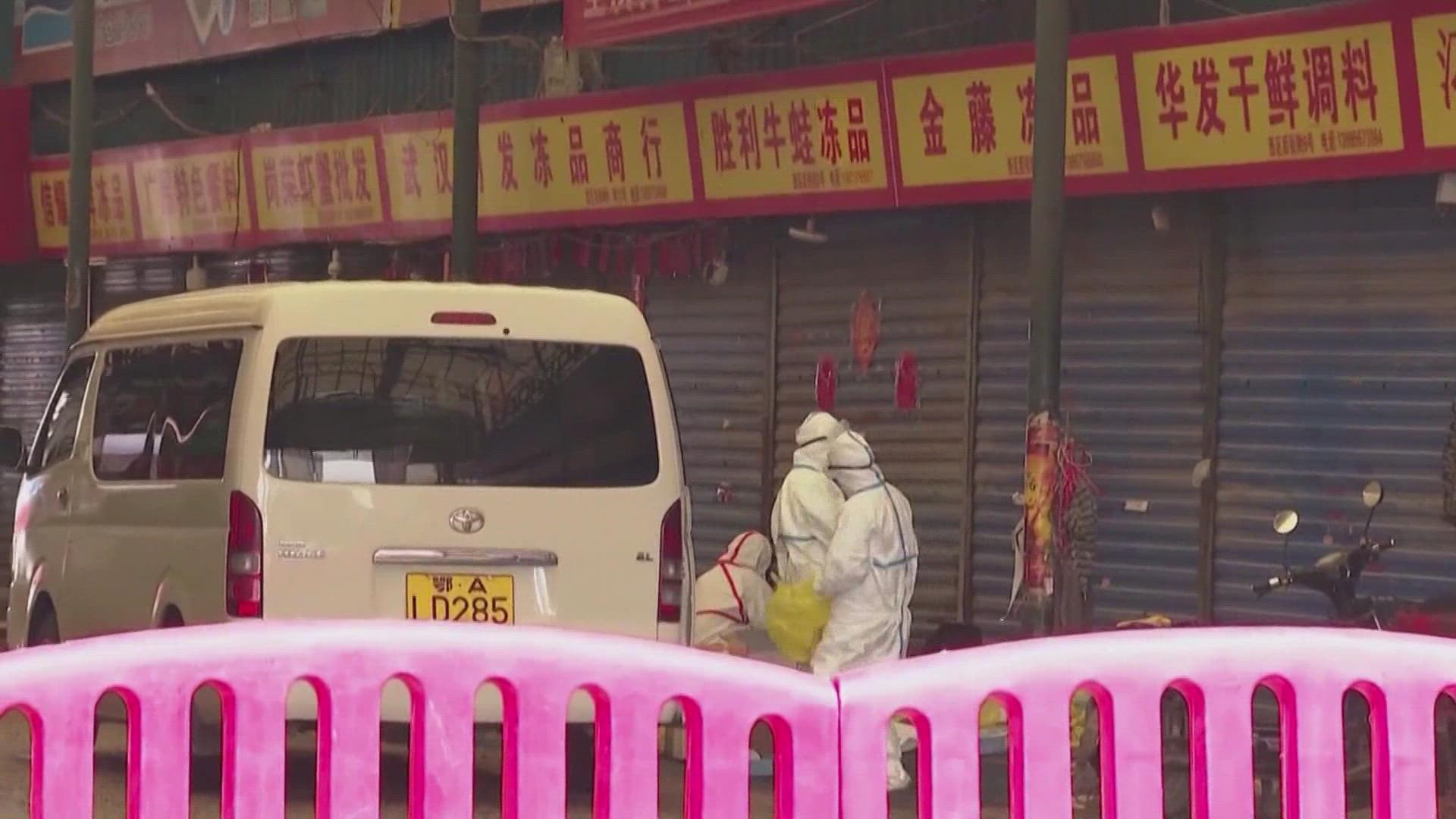LOUISIANA, USA — Many serious worldwide infections started in animals. One was a flu virus that went from birds to pigs to humans.
Another was Ebola.
Now a local expert, who has worked on the Ebola virus, is making international news with findings on the origins of the coronavirus.
This has been a controversy since the pandemic started. Did the coronavirus come from human manipulation and research in a Wuhan Chinese lab, or from a wet market 20 miles away?
Top U.S. scientists didn't seek to disprove the lab hypothesis, but after two and a half years of research, including detailed genetic analysis, they have the most likely scenario.
Professor of microbiology and immunology at Tulane, Dr. Bob Garry, is one of the leaders of a team of 40 U.S. scientists getting the world's attention.
Two papers published in Science, the premiere scientific journal, point to data that show the coronavirus most likely jumped from wild animals to people in a wet food market in Wuhan, China in December 2019.
“The southwest corner where they were selling live animals, and wildlife, animals like raccoon dogs, red foxes, and a few other species of mammals that are susceptible to SARS-CoV-2 infection.” Dr. Garry said.
They found two different genetic lines that spilled over from different animals to people, Type A and B. Type B is the one that took off worldwide.
“There's really good evidence for that when you look at how the virus is spread, the family trees of these viruses, and the timing of how these events took place,” Dr. Garry said. "There's no evidence that actually links the Wuhan Institute of Virology to any of the early cases.”
“SARS-CoV-2 is a very good pathogen and we just don’t know enough about virology and what makes a virus pathogenic to be able to rationally design those changes, to change those viruses in very specific ways, and many specific ways actually, to turn that virus into a very effective human pathogen. We don’t know enough but nature does,” Dr. Garry said.
And can they trust the accuracy of samples that came from China?
“We analyze the data in a way that would allow us to determine if there were mistakes in the data, or if it had potentially been manipulated in some way, our analyses would have been able to pick that up, and what I can say is our conclusion is very strong,” Dr. Garry said.
So what does this teach us going forward to prevent all the deaths worldwide?
Dr. Garry said wildlife trade with animals to humans needs to be regulated with strict testing for contamination.

